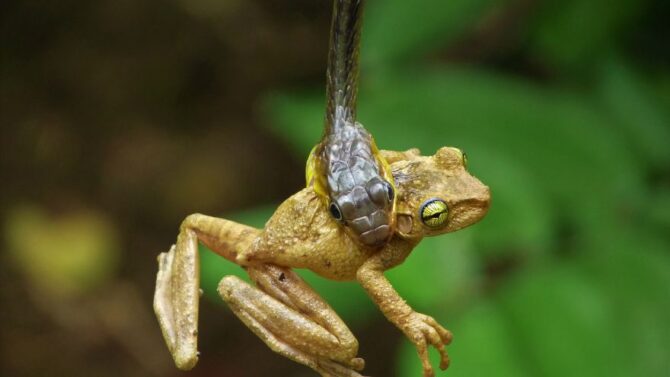Also known as the Australian green tree frog, green tree frog or simply tree frog, the White’s tree frog is a native species of Australia that was introduced into the United States and often live in tropical areas.
It isn’t white (the “White” does not refer to color) but the interesting quality of the tree frog is its ability to change colors. But why do White’s tree frogs change color?
The White’s tree frog is often green, but it changes color for many reasons, ranging from survival to mating.
This ability to change color is limited to some frog species like the tree frog, and there is a lot that goes into color changes.
This article will provide detailed information on the ability of White’s tree frogs to change colors.
What Types of Frogs Change Colors?
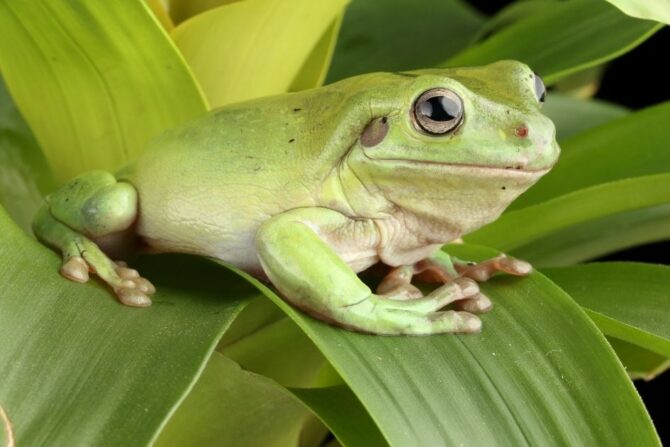
To understand this, we first need to look into two types of frogs based on color changes. This would help us know exactly which type of frog is expected to change color.
Under color changes, there are two types of frogs: the monochromatic frog and the dichromatic frog.
The monochromatic frog has only one natural color, which it bears throughout its lifetime. Monochromatic frogs can’t change colors, even when necessary.
Dichromatic frogs can change colors at least once in their lifetime, if not more. The color change might be temporary or permanent, and it is tied down to their instincts.
Only dichromatic frog species can change colors, and it often depends on what family they’re in. The Hylidae or Tree Frog family can change colors.
Do White’s Tree Frogs Change Color?
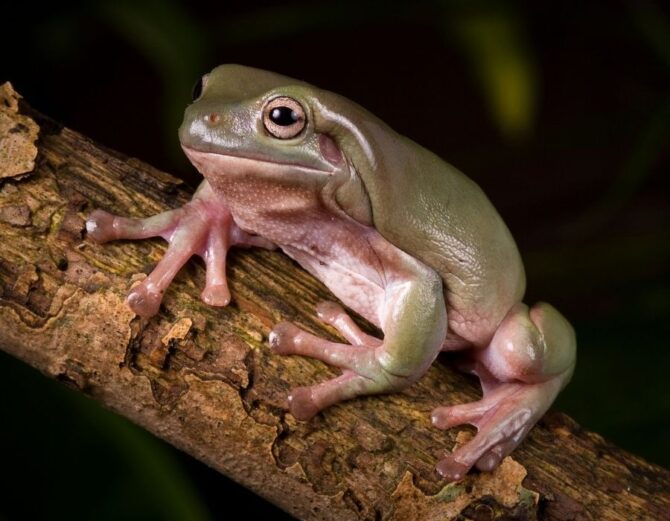
White’s tree frogs are part of the Hylidae family, which means they are dichromatic.
Like many other tree frogs, the White’s tree frog can change color and often does that when it needs to.
As we’ll soon see, different possible reasons lead to color changes in a White’s tree frog.
Most of these reasons are tied to survival, so the White’s tree frog doesn’t change colors for the fun of it. Let’s look into the major reasons this frog changes color.
Why Do Australian Green Tree Frogs Change Colors?
Mating
Mating is vital for the reproduction and survival of any animal species, and they each have their processes. For the White’s tree frog, part of the mating process involves a color change.
This is the most common color change amongst tree frogs in general, and it can either be temporary or permanent.
The color change occurs in males as a way of attracting females. The color change can turn into a competition as each male tries to attract a mate before the other.
The male can also use this color change as a signal for other males to back off from their selected partners.
Male frogs of most species tend to be territorial, and it is interesting to see the methods used to establish dominance.
Defense mechanism against predators
Lady frogs aren’t the only animals that fancy colors, though. Predators also do, so the White’s tree frog has to adapt to avoid becoming an animal’s next lunch.
Camouflage is the word that best describes how the White’s tree frog protects itself from predators.
Here, the White’s tree frog doesn’t change to a brighter color but takes on a color that’s identical to its environment.
This has a lot to do with the stress of trying not to get killed by the predator. Faced with this undue stress, tree frogs change colors.
Change in environment
Another reason a White’s tree frog can change color is due to changes in the environment.
Tree frogs travel a lot, and their search for a flourishing habitat can lead them to an environment with a color different from where they were.
Exposure to a new environment can lead to a color change. The characteristics of the environment play a big role in the speed at which the frogs change colors.
In a majorly brown environment and with a high intensity of light, the frog changes slower. However, when the environment is green and the light is low, the color change is fast.
Regulating temperature
There are some controversies as to whether color change has a role to play in regulating temperature, but for many researchers, the answer is yes.
Here’s basically how it works.
When temperature increases due to the heat, the tree frog’s body reduces the amount of water it lets into the pores, thus becoming less permeable.
This enables the frog to absorb heat. To achieve this, the frog secretes chemicals that make the body more waterproof. This chemical influences color.
Communication
Color change during mating is a form of communication, but this isn’t the only way tree frogs communicate with color.
They can change color when they sense an incoming threat to warn others, or once they come across food while hunting.
Animals have always had methods of communicating that humans aren’t privy to. Vocalizations are the common ones, but not the only method. For tree frogs, color speaks louder than croaks.
Physiology
We’ve already examined stress related to predatory attacks, but predators aren’t the only cause of stress in tree frogs. Lack of food, clean water, and even the mating process can make the frog stressed.
During these periods, the body secretes hormones that can change color. Diseases can also lead to color changes.
How Do White’s Tree Frogs Change Colors?

Having looked into the “Whys”, let’s consider the “Hows”. How do these frogs change color?
First, bear in mind that tree frogs (and all dichromatic frogs by extension) can either change colors temporarily or permanently.
Permanent changes occur when the frog reaches adulthood and gets sexually mature. Temporary changes have different factors leading to them.
For both forms of color changes, a tree frog can either pass through a morphological or physiological process.
The morphological process leads to a permanent color change, and it is a natural part of a frog’s life cycle. This process can be as short as a few days or extend to some months.
The change occurs at the outer part of the skin called the Chromatophore. The morphological process can last for a mating season or throughout the frog’s life.
The physiological process is concerned with temporary color changes, and it can last for some hours.
It is often triggered by internal and external factors, most of which we’ve seen in the preceding section.
The Role of Pigmentation on Color Change
The key player in the tree frog’s color change is the epidermis.
The epidermis contains three pigment layers, and even when the color change is caused by external factors, these pigment layers are responsible for the color changes.
On a dichromatic frog’s upper coat are two marks that are often green and brown. This means the major colors these frogs can change to are green and brown.
For the White’s tree frog, however, these aren’t the only colors.
What Colors Does the White’s Tree Frog Change To?
The White’s tree frog’s common color is green, but when attached to a brown object it turns brown. It can also make the green brighter, as well as take on a light blue color.
Conclusion
White’s tree frog can change color, just like its fellow tree frogs and other frog species that are considered dichromatic.
The color change can either be temporary or permanent and often goes through a morphological or physiological process.
There are many different reasons a White’s tree frog will change color, and all revolve around survival in their habitat.
Check out these interesting articles about frogs:
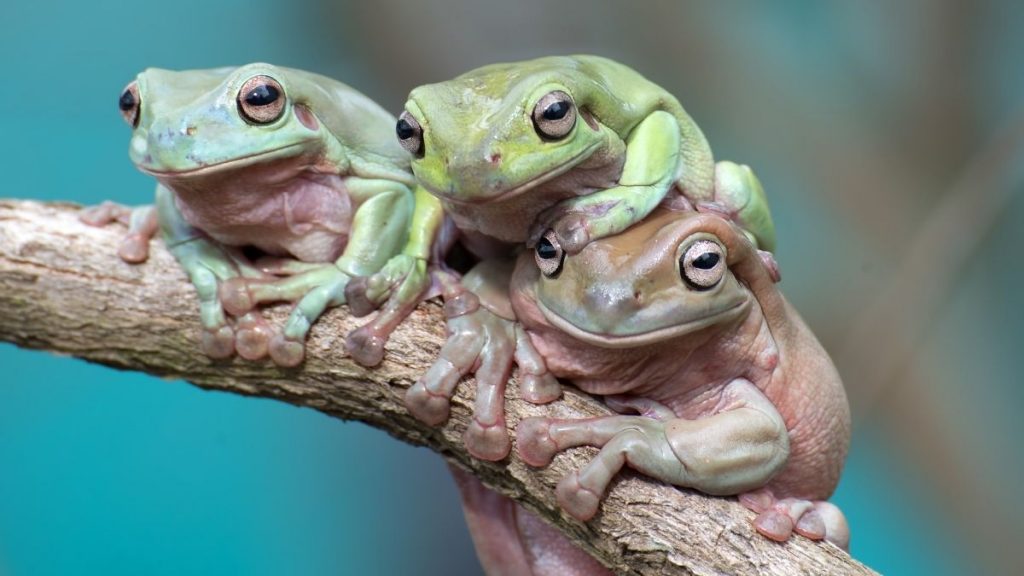
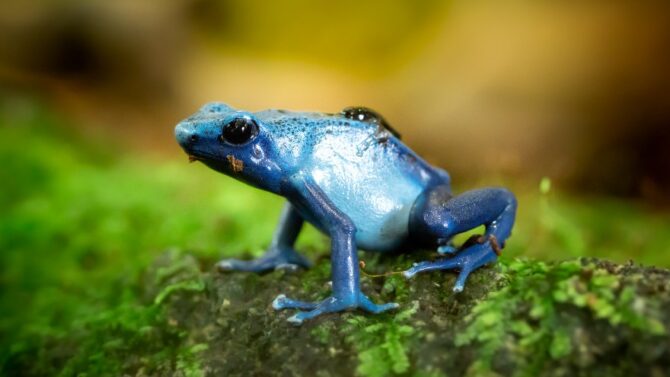
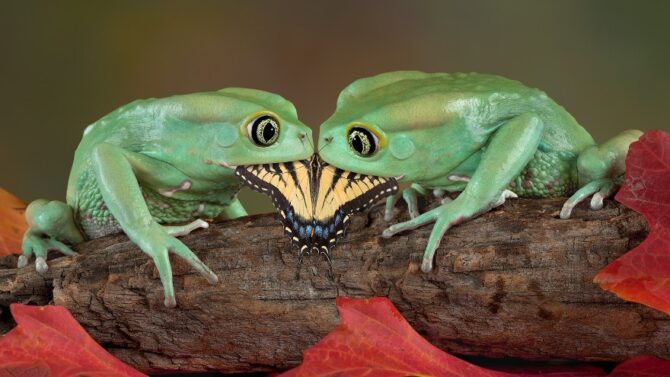
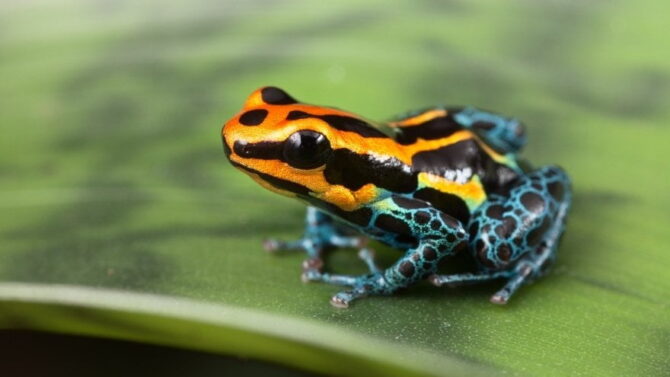
![How Long Can Frogs Go Without Food Or Water [Answered]](https://animalvivid.com/wp-content/uploads/2022/08/How-Long-Can-Frogs-Go-Without-Food-Or-Water-Answered.jpg)

